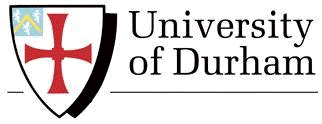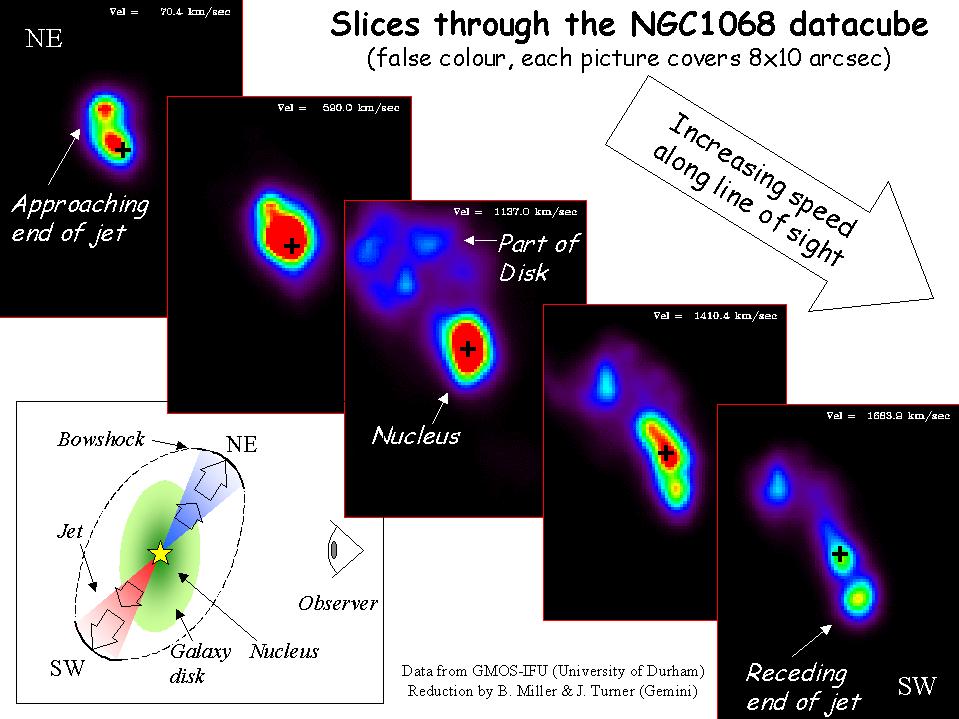



The Extragalactic Astronomy Group is one of the largest in Europe encompassing both observational and theoretical aspects of the formation and evolution of galaxies, clusters and large scale structure. The group makes extensive use of the world's forefront observational facilities to test the advanced theoretical models of galaxy and structure formation developed in Durham and elsewhere. Related fields include studies of stellar objects with strong gravitational fields as well as supermassive black holes in Active Galactic Nuclei. The group interacts closely with the department's Astronomical Instrumentation Group to aid the development and commissioning of instrumentation purpose-built for studies relevant to this area. This has led to the development of faint, multi-object instrumentation for studying remote galaxies and quasars and integral field (3D) spectrographs for the study of galaxy dynamics and AGN.
Our research programmes utilise the largest ground-based optical and near-infrared telescopes including those in Hawaii, Australia, Chile and the Canary Islands, and we have been particularly successful at obtaining time on the Hubble Space Telescope. The multi-wavelength aspects of our programme focus on sub-millimeter and radio observations from ground-based facilities in Hawaii, Spain, Australia and the US and X-ray observations from space-based facilities such as the Chandra and Newton satellites.
The research programme of the Theoretical Cosmology Group is focussed on the study of galaxy formation, large-scale structure and the nature of the cosmic dark matter. It makes extensive use of large numerical simulations performed at the newly created Institute for Computational Cosmology, which is the UK base of the Virgo consortium. Our programme also includes semi-analytical modelling of galaxy formation and analysis of large redshift surveys like the Anglo-Australian 2dF galaxy redshift survey.
Astronomical technology is at the cutting edge of modern astronomy: new discoveries are often directly enabled by advances in astronomical instruments. The Astronomy Instrumentation Group is one of the largest in the UK and collaborates with observatories worldwide in constructing, commissioning and exploiting novel instruments for optical and infrared astronomy. In the past decade, the group has built and commissioned more than 10 new instruments for the UK's largest telescopes around the world, including the Gemini Multiobject Spectrographs (GMOS) and the NAOMI adaptive optics system for the Herschel telescope with our UK and international partners.. Numerous astronomical programmes have been, and continue to be, undertaken with these instruments.
For the past few years the focus of our work has been on developing novel instrument concepts for the generation of very large (8-10 metre) telescopes which lie at the vanguard of ground-based astronomy in the new millennium. We are also closely involved with European initiatives for instrumentation on board the Next Generation Space Telescope (NGST), which will supercede the Hubble Space Telescope at the end of this decade.
A major thrust of recent work has been the development of (3D)
instruments for integral spectroscopy. The group recently completed and
tested the first 3D facility on an 8-10m telescope - the GMOS
Integral Field Unit (see below) and is constructing similar facilities
for other large telescopes in the visible and near-infrared and studying
the implementation of integral field spectroscopy on NGST
with
European partners.

Juergen Schmoll: 3D instruments (IMACS-IFU, image slicing technology); planetary nebulae
Simon Morris: 3D (Fabry-Perot, FTS, IFS) and AO instruments; AGN and galaxy formation.
Richard Bower: Multi-object spectrographs: observational and theoretical aspects of the formation and evolution of galaxies and clusters, galaxy environments
Ian Smail: 2-D velocity fields, abundance gradients and winds in massive galaxies at z > 2, resolved stellar populations in lensed galaxies.
Ray Sharples: Instrumentation (group leader; ESO KMOS study); extragalactic globular cluster systems as probes of galaxy formation theories, evolution of galaxies in clusters.
Alistair
Edge: Interpretation of 3D data (Fabry Perot); X-ray
perspective on clusters of galaxies
 Durham
was founded just over 1000 years ago by monks bearing the uncorrupted body
of Saint Cuthbert who died hundreds of years before. Built on a tight loop
of the river Wear, surrounded by steep gorges, it was a natural defensive
site. Soon the Norman invaders had rebuilt the cathedral as a demi-fortress
in the latest version of the romanesque style in which it remains almost
untouched. Together with the castle, also of the 11th century, it is designated
a
World Heritage site. Some consider the cathedral to be the finest
romanesque building in the world. The city is one of the smallest and most
beautiful in England and is surrounded by countryside which can be seen
from almost anywhere in the city. Although close to the excitement and
amenities of Newcastle, the region's capital, the city retains its own
vigorous university-inspired cultural life and has recently acquired a
new theatre and Imax cinema.
Durham
was founded just over 1000 years ago by monks bearing the uncorrupted body
of Saint Cuthbert who died hundreds of years before. Built on a tight loop
of the river Wear, surrounded by steep gorges, it was a natural defensive
site. Soon the Norman invaders had rebuilt the cathedral as a demi-fortress
in the latest version of the romanesque style in which it remains almost
untouched. Together with the castle, also of the 11th century, it is designated
a
World Heritage site. Some consider the cathedral to be the finest
romanesque building in the world. The city is one of the smallest and most
beautiful in England and is surrounded by countryside which can be seen
from almost anywhere in the city. Although close to the excitement and
amenities of Newcastle, the region's capital, the city retains its own
vigorous university-inspired cultural life and has recently acquired a
new theatre and Imax cinema.
Durham is situated in the heart of the old British region of Bereneich (land of the mountain passes), later, under the name Bernicia, to form the nucleus of the powerful Anglian kingdom of Northumbria, a name still used for the region. In the 7th century, Northumbria was the intellectual centre of Europe as the rest of the continent sank into turmoil. Before that, the region was the northern limit of the Roman empire which was demarcated by Hadrian's Wall which still runs east-west a little to the north of Durham. After Northumbria was destroyed by the Vikings, the region became a buffer zone between the new kingdoms of Scotland and England, under the rule of its prince-bishops. The region again reached prominence as a cradle of the industrial revolution and pioneer of the railways. The heavy industry has now mostly gone, but the region is re-inventing itself around engineering and service industries and as an artistic centre (for example, the spectacular public art of nearby Gateshead). Durham lies at the gateway to the Durham dales which penetrate the Pennine mountains, with the Cumbrian Lake District beyond. To the south lie the dales of Yorkshire and the famous city of York. To the north lies the beautiful border country of the Cheviot and Eildon hills with Edinburgh beyond. The coast is rugged with beautiful cold-water beaches in Northumberland.